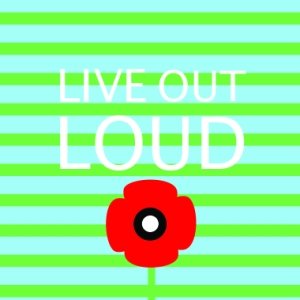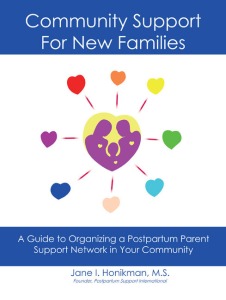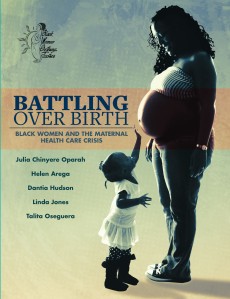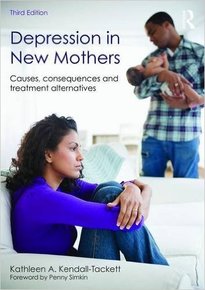Kathleen Kendall-Tackett, PhD, IBCLC, FAPA looks at whether controlled crying leads to long-term harm.
Should we recommend controlled crying?
The media response to the findings of Price, Wake, Ukoumunne, & Hiscock (2012) was overwhelming. The study reported on the long-term effects of a controlled-crying intervention for parents of infants 8 to 10 months old. The children were assessed five years after the intervention and showed no apparent harm.
Was this the answer that weary parents had been waiting for? The authors certainly thought so. In fact, they concluded that practitioners could “confidently” recommend this approach. And proponents of this parenting technique continue to cite the study in support of the method.
 Before we recommend controlled crying to parents, let’s step back and critically evaluate that study and where it fits within the larger picture of research in maternal-child health.
Before we recommend controlled crying to parents, let’s step back and critically evaluate that study and where it fits within the larger picture of research in maternal-child health.
A number of serious limitations to the study call into question whether this parenting practice is advisable.
Study design
The Price et al. (2012) researchers randomly assigned parents to either intervention or control groups. In the intervention group, parents received instruction in controlled crying, i.e., to wait an increasing amount of time before responding to their infants’ cries, or “camping out,” which involved staying with their infants until the infants fell asleep on their own. The parents in the control group received “usual care,” which meant they received no specific recommendation regarding infant sleep management techniques. The authors found that the controlled-crying intervention prevented depression in mothers and improved babies’ sleep.
At the five-year follow-up with 225 families (69% of the original sample), the researchers found that the intervention did not adversely affect the parent-child bond, the mother’s depression level, the child’s level of adjustment, or their cortisol levels. Indeed, they noted, that there were no adverse effects. However, there were also no long-term benefits. Still, the authors concluded that practitioners could recommend this technique to prevent postpartum depression and improve infant sleep.
The study’s limitations
There were a number of limitations to this study.
The impact of context: the cumulative effect of childhood adversities
 Context is an important consideration when evaluating potential harm caused by a parenting technique. In other words, how many parental missteps does it take for children to show evidence of lasting harm? Fortunately, children are resilient and don’t require perfect parenting. However, chronic bad parenting does harm children and the effects are cumulative (Shonkoff, Boyce, & McEwen, 2009, Shonkoff, 2016). Chronic bad parenting has also been described as childhood adversity in such major research studies as the Adverse Childhood Experiences Study (Centers for Disease Control and Prevention, 2010) and New Zealand’s Dunedin Multidisciplinary Health and Development Study (Danese et al., 2009).
Context is an important consideration when evaluating potential harm caused by a parenting technique. In other words, how many parental missteps does it take for children to show evidence of lasting harm? Fortunately, children are resilient and don’t require perfect parenting. However, chronic bad parenting does harm children and the effects are cumulative (Shonkoff, Boyce, & McEwen, 2009, Shonkoff, 2016). Chronic bad parenting has also been described as childhood adversity in such major research studies as the Adverse Childhood Experiences Study (Centers for Disease Control and Prevention, 2010) and New Zealand’s Dunedin Multidisciplinary Health and Development Study (Danese et al., 2009).
So does controlled crying cause infant harm? If it occurs in families with generally warm, responsive, and loving parents, probably not. Because children are resilient, they can endure a lot. Family strengths can buffer the potential negative effects.
But what about the impact of controlled crying when it takes place in high-risk families? This is a key limitation in the Price et al. study. A full 31% of their original sample was lost to follow-up. Most of these families were identified as “high disadvantage.” In other words, the group most likely to be negatively affected by controlled crying was not in the follow-up study.
Assessing “dose”
When assessing potential harm of a practice, it’s also important to consider the chronicity and severity of the experience. In terms of infant sleep, we need to know:
- how often controlled crying was used in an average week
- how many weeks (or months) that the parents employed these techniques
- how many minutes elapsed in an average episode before the parents responded to their babies.
I would expect more long-term negative effects if parents did not respond to their babies’ cries for long periods of time (45 minutes or longer), and if they used this technique for months on end. In contrast, if parents used this technique a few times and for just a few minutes, there probably wouldn’t be any negative effects.
Chronicity and severity is basically a way of factoring in “dose” to the intervention. This important nuance was totally absent from the Price et al. study.
We know little about what the parents actually did. A full range of practices was grouped together in the “intervention group.” We also don’t know what the “control” group did. These parents could easily have implemented a controlled-crying program, too, for themselves, using one of the myriad books for parents on sleep training. Given the wide range of practices that likely occurred in both the “intervention” and “control” groups, I am again not surprised to see no significant difference.
The Hawthorne Effect
Was the intervention actually effective, even in the short term?
Another problematic aspect of this study has to do with the research design’s inability to account for the Hawthorne Effect. The Hawthorne Effect was first noted by industrial psychologists in the 1920s who were testing the impact of minute changes in illumination on factory workers’ productivity. When they raised the light level, employees reported that it was “better” and productivity increased. When they lowered the level, it was also “better” and productivity increased. In other words, any intervention was described as helpful. It’s basically a placebo effect for behavioral interventions.
The Hawthorne Effect could also be behind the positive results for the controlled-crying intervention. Earlier papers from this same research sample found lower rates of depression and better sleep among the mothers in the intervention group. Yet these results do not demonstrate that it was the controlled-crying technique per se that actually caused the effect. Perhaps the mothers simply appreciated someone listening to their concerns?
Controlled crying was compared to “usual care.” A better test for the effectiveness of this technique would have been to compare it with another intervention (such as educating mothers about the developmental normality of infant waking at 8 to 10 months, and brainstorming about ways the mothers could get more rest and cope with fatigue). Given that the authors are actually recommending this technique, this standard of evidence is a minimum.
Cortisol: the stress hormone

One concern that critics of controlled crying raise is that this parenting technique changes infant physiology and alters the production of the stress hormone cortisol. To address this concern, the authors assessed cortisol levels of the children at two different points during a single day at age 6. They found no significant differences in cortisol levels at age 6 between the intervention and control groups, which further reassured them that their techniques were not harmful.
These findings on their own do not establish that there was no physiological harm.
To demonstrate lack of harm, the authors would have needed to measure cortisol levels during infancy:
- before the intervention
- during the intervention and
- after the intervention.
Did controlled crying elevate cortisol levels at those times? How high were those levels and how long did they remain elevated? The authors did not measure the levels at those points at all, only afterwards at age 6.

A question we need to ask is what happens to babies when their mothers do not respond to their cues? One way this has been studied is by examining the impact of maternal depression on infants. Maternal depression impairs mothers’ ability to respond to their infants’ cues. Infants whose mothers do not respond to their cues tend to have elevated cortisol levels (Feldman et al., 2009). Even when non-response is temporary, babies still find it stressful. In the still-faced mother paradigm, mothers are asked not to respond to their infants’ cues in a laboratory setting [watch the video clip]. This research is designed to mimic the effects of maternal depression. The still-faced-mother increases her baby’s cortisol levels (Grant et al., 2009). And the effect of chronic maternal non-response can last long past infancy (Douglas & Harmer, 2011; Luijk et al., 2010; Murray, Halligan, Goodyer, & Herbert, 2010).
So why the concern about cortisol? Mainly, it’s this: cortisol is quite toxic to brain cells. If cortisol is elevated for only a short time, it likely causes no damage. But if cortisol levels are repeatedly elevated because the infants are experiencing long and repeated incidents of being ignored when they cry, that can be a problem. The brain is at its most vulnerable in the first five years, so soaking the developing brain in cortisol is not a good idea (Buss et al., 2012).
The authors of Price et al. claimed no effect on cortisol levels, simply because there was no difference between the groups at age 6. In my opinion, that lack of difference does not mean lack of harm. For some of these children, the effects of elevated cortisol in infancy could be more subtle. Cortisol levels likely returned to normal in the intervening five years, unless there was ongoing adversity. Unfortunately, cortisol that was elevated in infancy could nevertheless have affected vulnerable brain cells, even if current levels are normal. Effects would likely not show up without more sensitive measures.
What about breastfeeding?
The final limitation of this study is rather stunning. Price et al. did not measure the effect of infant feeding method on sleep or maternal depression. Yet feeding method has a direct effect on both maternal sleep and postpartum depression, which are the two main factors the authors claim to address with their sleep intervention. It is far from a marginal issue. This omission is particularly surprising given that Australia, the authors’ home country, has one of the highest rates of breastfeeding in the world.
 Recent studies have demonstrated that exclusively breastfeeding mothers get more sleep and are less likely to be depressed than their mixed- or formula-feeding counterparts. They take fewer minutes to fall asleep, sleep longer over the course of a night, and report more daytime energy and better physical health than their mixed- or formula-feeding counterparts (Doan, Gardiner, Gay, & Lee, 2007; Dorheim, Bondevik, Eberhard-Gran, & Bjorvatn, 2009a, 2009b; Kendall-Tackett, Cong, & Hale, 2011).
Recent studies have demonstrated that exclusively breastfeeding mothers get more sleep and are less likely to be depressed than their mixed- or formula-feeding counterparts. They take fewer minutes to fall asleep, sleep longer over the course of a night, and report more daytime energy and better physical health than their mixed- or formula-feeding counterparts (Doan, Gardiner, Gay, & Lee, 2007; Dorheim, Bondevik, Eberhard-Gran, & Bjorvatn, 2009a, 2009b; Kendall-Tackett, Cong, & Hale, 2011).
Given these findings, isn’t it strange that breastfeeding was not even enquired about, let alone controlled for?
Conclusion
Based on the limitations of this study, I do not recommend controlled crying. The sample size is small, the follow-up sample is missing the children most likely to be negatively affected, their assessment did not account for the Hawthorne/placebo effect, they have not measured dose of the intervention, nor have they accounted for feeding method, which recent research has soundly demonstrated as being related to both variables of key interest, maternal fatigue and postpartum depression.
When the same group of researchers published an earlier study demonstrating that controlled crying lessened the risk of postpartum depression (Hiscock & Wake, 2002), a German physician (Perl, 2002) responded:
I am unhappy to find fairly undiluted ideas of militaristic Nazi infant care uncritically repeated by these Australian care providers. The Nazis understood very well the crucial effect of letting young babies cry on their future development and made this a central theme in their child care. As a scientist, I find it hard to believe that all of the results of mother-infant sleep research of the 1990s completely escaped the authors’ notice.
My objections to their approach are not new.
Given recent findings in neuroscience, childhood trauma and adversity, and breastfeeding and maternal sleep, I’d urge anyone considering the recommendation of controlled-crying techniques to examine the limitations of the Price et al. study and suggest instead approaches that meet the needs of both mother and baby.
February 2017: Should you pick your baby up every time he cries? Professor Darcia Narvaez of the University of Notre Dame’s Department of Psychology says “Yes.”
And, here, I ask baby-sleep expert Wendy Middlemiss, “Can we let babies cry it out?”
References

Buss, C., Davis, E. P., Shahbaba, B., Pruessner, J. C., Head, K., & Sandman, C. A. (2012). Maternal cortisol over the course of pregnancy and subsequent child amygdala and hippocampus volumes and affecive problems. Proceedings of the National Academy of Sciences USA, 109(20), E1312-E1319.
Centers for Disease Control and Prevention. (2010). Adverse childhood experiences: Major findings.
Danese, A., Moffitt, T. E., Harrington, H., Milne, B. J., Polanczyk, G., Pariante, C. M., & Caspi, A. (2009). Adverse childhood experiences and adult risk factors for age-related disease: Depression, inflammation, and clustering of metabolic risk factors. Archives of Pediatric and Adolescent Medicine, 163(12), 1135-1143.
Doan, T., Gardiner, A., Gay, C. L., & Lee, K. A. (2007). Breastfeeding increases sleep duration of new parents. Journal of Perinatal & Neonatal Nursing, 21(3), 200-206.
Dorheim, S. K., Bondevik, G. T., Eberhard-Gran, M., & Bjorvatn, B. (2009a). Sleep and depression in postpartum women: A population-based study. Sleep, 32(7), 847-855.
Dorheim, S. K., Bondevik, G. T., Eberhard-Gran, M., & Bjorvatn, B. (2009b). Subjective and objective sleep among depressed and non-depressed postnatal women. Acta Psychiatrica Scandinavia, 119, 128-136.
Douglas, J.-L., & Harmer, C.-J. (2011). Early morning cortisol response and emotional processing in adults exposed to postnatal depression in infancy. European Psychiatry, 26, 479-481.
Feldman, R., Granat, A., Pariente, C., Kanety, H., Kuint, J., & Gilboa-Schechtman, E. (2009). Maternal depression and anxiety across the postpartum year and infant social engagement, fear regulation, and stress reactivity. Journal of the American Academy of Child and Adolescent Psychiatry, 48(9), 919-927.
Grant, K.-A., McMahon, C., Austin, M.-P., Reilly, N., Leader, L., & Ali, S. (2009). Maternal prenatal anxiety, postnatal caregiving and infants’ cortisol responss to the still-face procedure. Developmental Psychobiology, 51, 625-637.
Hiscock, H., & Wake, M. (2002). Randomised controlled trial of behavioural infant sleep intervention to improve infant sleep and maternal mood. British Medical Journal, 324(7345), 1062-1065.
Kendall-Tackett, K. A., Cong, Z., & Hale, T. W. (2011). The effect of feeding method on sleep duration, maternal well-being, and postpartum depression. Clinical Lactation, 2(2), 22-26.
Luijk, M. P. C. M., Saridjan, N., Tharner, A., Van Ijzendoorn, M., Bakermans-Kranenburg, M. J., Jaddoe, V. V. W., . . . Tiemeier, H. (2010). Attachment, depression, and cortisol: Deviant patterns in insecure-resistant and disorganized infants. Developmental Psychobiology, 52, 441-452.
Murray, L., Halligan, S. L., Goodyer, I., & Herbert, J. (2010). Disturbances in early parenting of depresssed mothers and cortisol secretion in offspring: A preliminary study. Journal of Affective Disorders, 122, 218-223.
Perl, F. M. (2002). Infant sleep intervention or Nazi drill? Rapid response to Hiscock & Wake. British Medical Journal.
Price, A. M. H., Wake, M., Ukoumunne, O. G., & Hiscock, H. (2012). Five-year follow-up of harms and benefits of behavioral infant sleep intervention: Randomized trial. Pediatrics, 130(4).
Shonkoff, J. P., Boyce, W. T., & McEwen, B. S. (2009). Neuroscience, molecular biology, and the childhood roots of health disparities: building a new framework for health promotion and disease prevention. JAMA, 301(21), 2252-2259. doi: 301/21/2252 [pii]10.1001/jama.2009.754.
Shonkoff, J.P. (2016). Capitalizing on Advances in Science to Reduce the Health Consequences of Early Childhood Adversity. JAMA Pediatr, 170(10),1003-1007. doi:10.1001/jamapediatrics.2016.1559.
 Dr. Kathleen Kendall-Tackett is a health psychologist and International Board Certified Lactation Consultant, and the owner and Editor-in-Chief of Praeclarus Press, a small press specializing in women’s health. She is Editor-in-Chief of two peer-reviewed journals: Clinical Lactation and Psychological Trauma. She is Fellow of the American Psychological Association in Health and Trauma Psychology, Past President of the APA Division of Trauma Psychology, and a member of the Board for the Advancement of Psychology in the Public Interest. Dr. Kendall-Tackett specializes in women’s-health research including breastfeeding, depression, trauma, and health psychology, and has won many awards for her work including the 2016 Outstanding Service to the Field of Trauma Psychology from the American Psychological Association’s Division 56.
Dr. Kathleen Kendall-Tackett is a health psychologist and International Board Certified Lactation Consultant, and the owner and Editor-in-Chief of Praeclarus Press, a small press specializing in women’s health. She is Editor-in-Chief of two peer-reviewed journals: Clinical Lactation and Psychological Trauma. She is Fellow of the American Psychological Association in Health and Trauma Psychology, Past President of the APA Division of Trauma Psychology, and a member of the Board for the Advancement of Psychology in the Public Interest. Dr. Kendall-Tackett specializes in women’s-health research including breastfeeding, depression, trauma, and health psychology, and has won many awards for her work including the 2016 Outstanding Service to the Field of Trauma Psychology from the American Psychological Association’s Division 56.
Dr. Kendall-Tackett has authored more than 400 articles or chapters, and has recently completed her 35th book, The Phantom of the Opera: A Social History of the World’s Most Popular Musical. Her most recent books include: Depression in New Mothers, 3rd Edition (2016, Routledge UK, in press), Women’s Mental Health Across the Lifespan (2016, Routledge US, in press, with Lesia Ruglass), Psychology of Trauma 101 (2015, Springer, with Lesia Ruglass) and The Science of Mother-Infant Sleep (2014, Praeclarus, with Wendy Middlemiss). Her websites are:























March 9, 2017 at 4:30 pm
I love all the studies and research you have included in this. It’s very thorough. Every parent has the right to raise their child how they prefer but me personally – I don’t believe babies cry for no reason. The world is already a cruel and uncaring place for my child to grow up in, I’d like my girl to know that I care and her concerns matter to me.
LikeLike